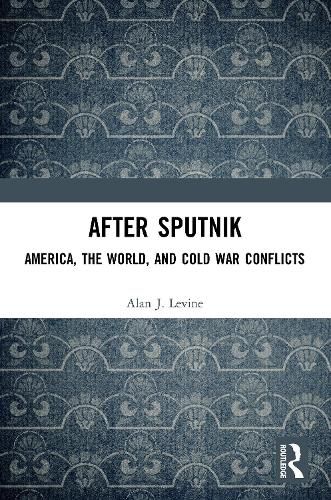Readings Newsletter
Become a Readings Member to make your shopping experience even easier.
Sign in or sign up for free!
You’re not far away from qualifying for FREE standard shipping within Australia
You’ve qualified for FREE standard shipping within Australia
The cart is loading…






On October 4, 1957 in the midst of the Cold War, the Soviet Union launched Sputnik I, the first artificial earth satellite. For the West, and especially the United States, it was a shattering blow to national morale and pride. It led to a deep-seated fear that the Soviet Union would surpass the United States in both technology and power and that even nuclear war might be near.
After Sputnik shows that the late 1950s were not an era of complacency and smugness, but were some of the most anxious years in American history. The Cold War was by no means a time of peace. It was an era of a different kind of battle-one that took place in negotiations and in the internal affairs of many countries, but not always on the battlefield. While many choose to remember President Eisenhower as a near-pacifist, his actions in Lebanon, the Taiwan Straits crisis, Berlin, and elsewhere proved otherwise. Seconded by his able secretary of state, John Foster Dulles, he steered America though some of the most difficult parts of the Cold War, not always succeeding, but preventing disaster. The Middle East and Berlin crises, the Indonesian Civil War, Fidel Castro’s rise to power, and other events are all bluntly discussed in the light of Western, and other, illusions and delusions.
In this engaging history, Alan J. Levine delves deeply into this often misrepresented period of history, and provides new insight into one of the most formative decades in American history.
$9.00 standard shipping within Australia
FREE standard shipping within Australia for orders over $100.00
Express & International shipping calculated at checkout
On October 4, 1957 in the midst of the Cold War, the Soviet Union launched Sputnik I, the first artificial earth satellite. For the West, and especially the United States, it was a shattering blow to national morale and pride. It led to a deep-seated fear that the Soviet Union would surpass the United States in both technology and power and that even nuclear war might be near.
After Sputnik shows that the late 1950s were not an era of complacency and smugness, but were some of the most anxious years in American history. The Cold War was by no means a time of peace. It was an era of a different kind of battle-one that took place in negotiations and in the internal affairs of many countries, but not always on the battlefield. While many choose to remember President Eisenhower as a near-pacifist, his actions in Lebanon, the Taiwan Straits crisis, Berlin, and elsewhere proved otherwise. Seconded by his able secretary of state, John Foster Dulles, he steered America though some of the most difficult parts of the Cold War, not always succeeding, but preventing disaster. The Middle East and Berlin crises, the Indonesian Civil War, Fidel Castro’s rise to power, and other events are all bluntly discussed in the light of Western, and other, illusions and delusions.
In this engaging history, Alan J. Levine delves deeply into this often misrepresented period of history, and provides new insight into one of the most formative decades in American history.